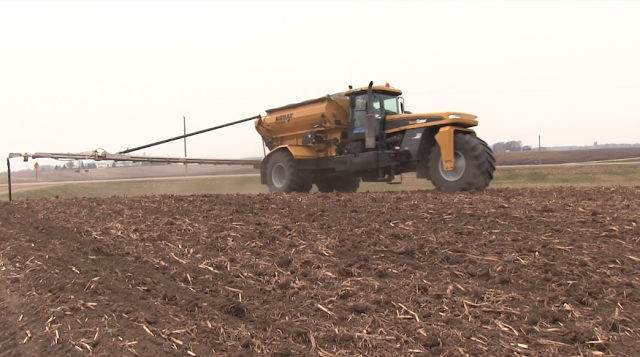By: Dan Kaiser, Extension nutrient management specialist
The primary challenge of a build-and-maintain strategy is figuring out what your “optimal” soil test level is and the amount of fertilizer required to maintain soil test values at that level. What is considered to be an “optimal” soil test can vary based on a producer’s attitude towards risk and land tenure, so decisions may change from one field to the next. Research has shown that application of the exact amount of phosphorus (P) and potassium (K) removed in a given year tends to increase, not maintain, soil test P and K levels.
Sufficiency approach
University of Minnesota P and K guidelines have historically followed the sufficiency approach, which recommends an amount of fertilizer needed to maximize yield and may not build soil test levels. This approach requires field research to identify the exact amount of fertilizer that should be applied at a given soil test level without considering building of a soil test level to an “optimal” level. The sufficiency approach has drawn criticism in the past because a lower amount of fertilizer is recommended as soil tests near critical levels, or the soil test value where maximum yield is achieved. This has led to concerns that the sufficiency approach may not be able to ensure maximum yield potential over time.Current research
Recent AFREC research has demonstrated that the sufficiency approach can work if the recommended fertilizer rate is applied based on the soil test for a given field, and the rate is adjusted based on the proven yield for a particular field or area of the field sampled. Since the sufficiency approach recommends a lower rate of fertilizer than the build-and-maintain approach, the net return for the fertilizer applied is higher. Does that mean that the build-and-maintenance strategy cannot result in a positive effect on yield while making money? The answer to that is no. A build-and-maintenance approach can be economical as long as an “optimal” soil test is targeted, where fertilizer application will result in increased yield.Tips for maintenance-based strategies
In Minnesota, past AFREC research has shown that maintenance-based strategies are best for soils testing 10-20 ppm Bray-P1 P. Building to, or drawing down to, this range and applying a maintenance rate can be economical, and our recent fertilizer guidelines include suggestions which should hold soil test levels near this range or draw soil test levels down to this range by applying a portion of crop removal.. It recommends using the current guidelines for the Very Low and Low P guidelines, 100% crop removal from 10-20 ppm, and a percentage of crop removal once the soil test is above 20 ppm. This strategy gives growers flexibility in determining which fertilization strategy fits best with their goals for a given field.Notes on the updated guidelines
- The maintenance strategy we recommend with the updated fertilizer guidelines is focused on soils where the Bray-P1 test is recommended (soil pH 7.4 or less). Soils with high calcium content can present issues for building nutrient levels and the sufficiency approach will likely work best. The Olsen range that corresponds to the Bray maintenance range is 8-15 ppm. It’s best not to try to excessively build P on high pH soils as higher rates of fertilizer are typically needed to maintain high soil test values. However, recent research has shown that yield potential of a field is not less for high pH soil which test low in P if adequate fertilizer is applied. Applying only what the crop needs to maximize yield on high pH, low P soils makes the most sense economically on soils which tie-up phosphorus.
- The maintenance rates we recommend are for commercial fertilizer only. The use of manure can maintain higher soil P tests and there are situations where removal rates of P may be beneficial, when manure is the nutrient source, to supply a larger portion of the crop’s N requirement.
- There is currently no university recommendation for an “optimal” soil test range for maintenance for K. Data suggest that maintenance levels of K applied for soil tests from 100-200 ppm may be sufficient but research is still underway to fine-tune corn and soybean K fertilizer guidelines. Sandy soils cannot be built to high K soil test levels as K will leach in sandy soils. Stay tuned for updates on research as we move forward.
---
For the latest nutrient management information, subscribe to Minnesota Crop News email alerts, like UMN Extension Nutrient Management on Facebook, follow us on Twitter, and visit our website.
Support for Minnesota Crop News nutrient management blog posts is provided in part by the Agricultural Fertilizer Research & Education Council (AFREC).

Comments
Post a Comment